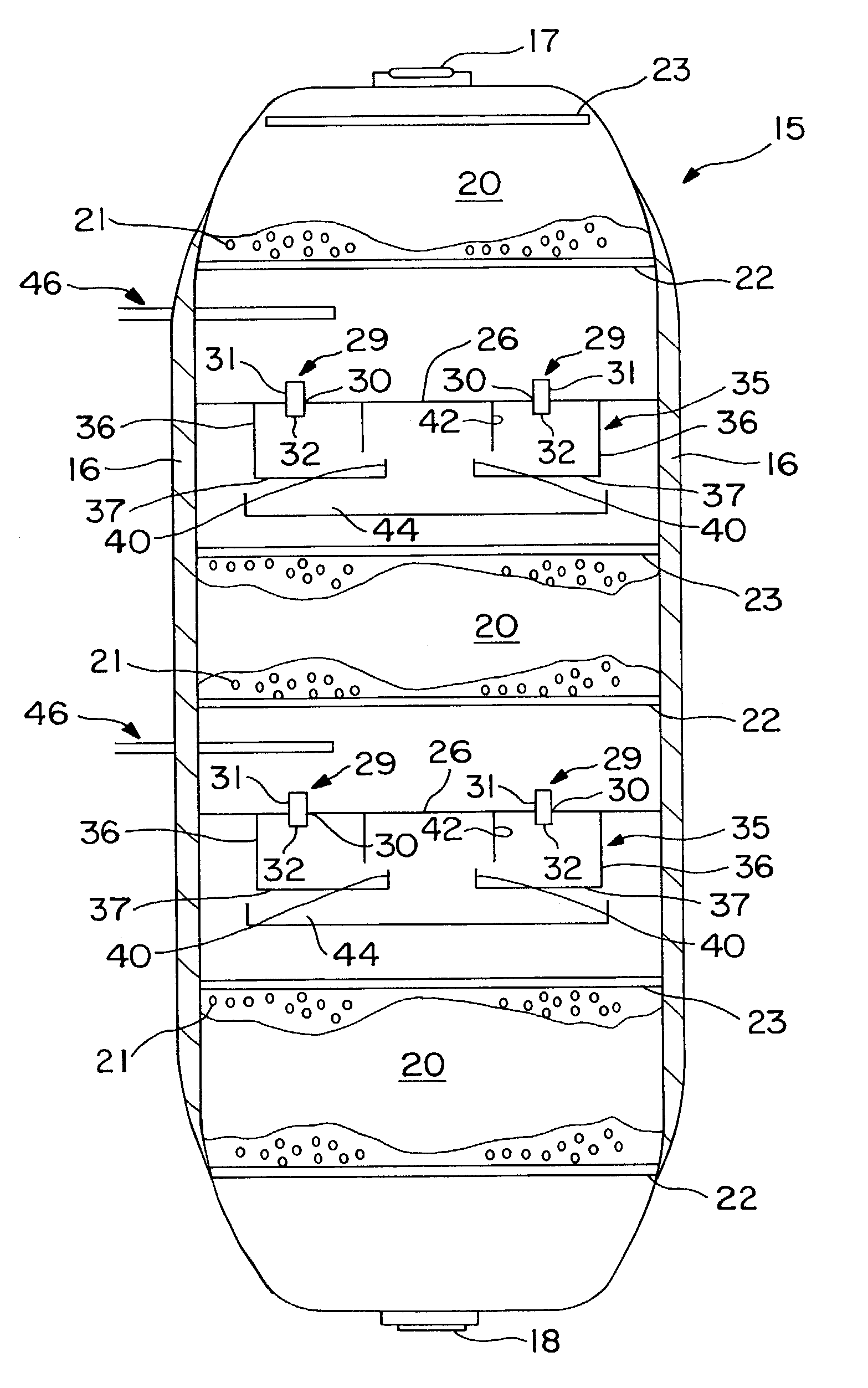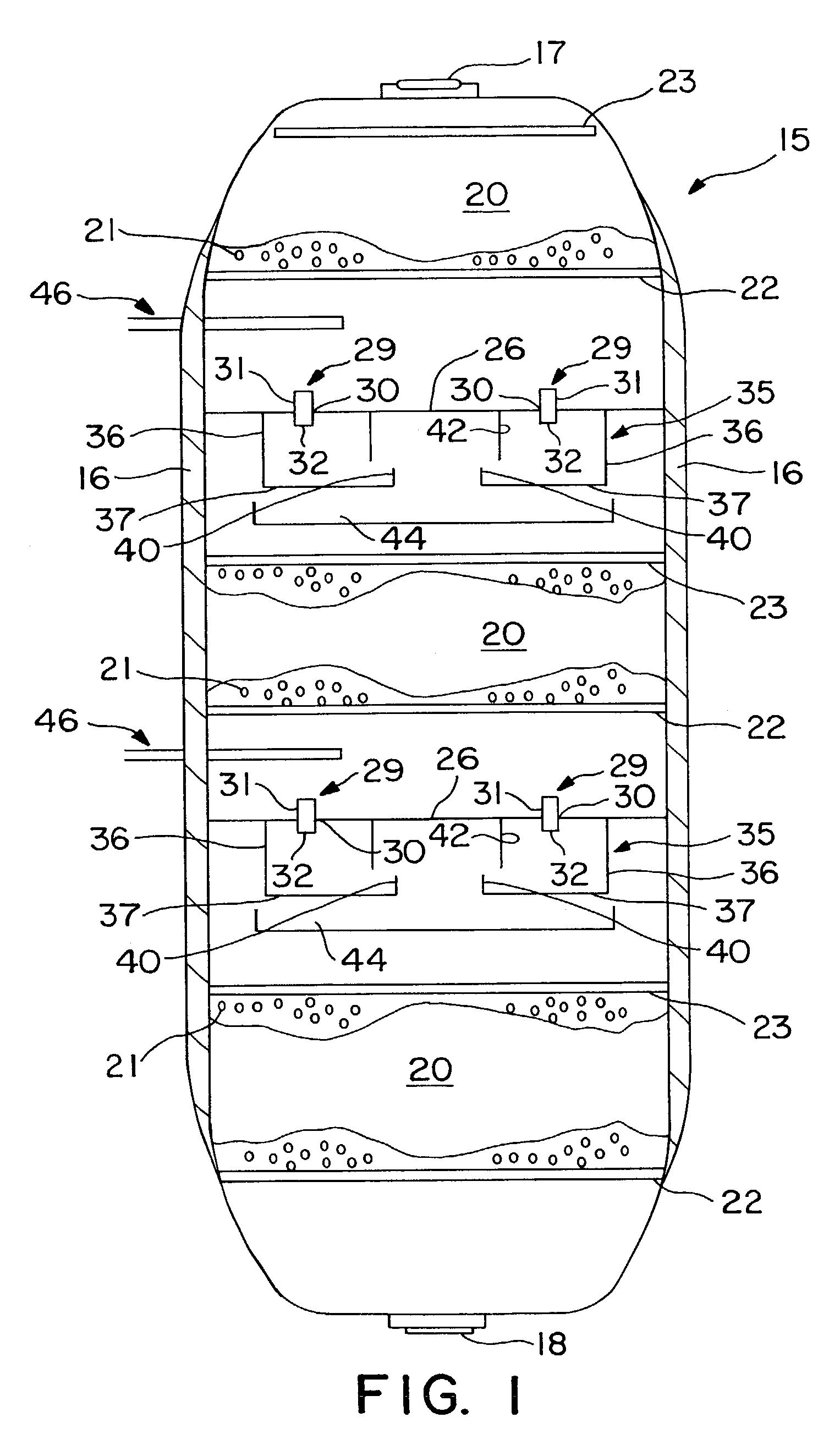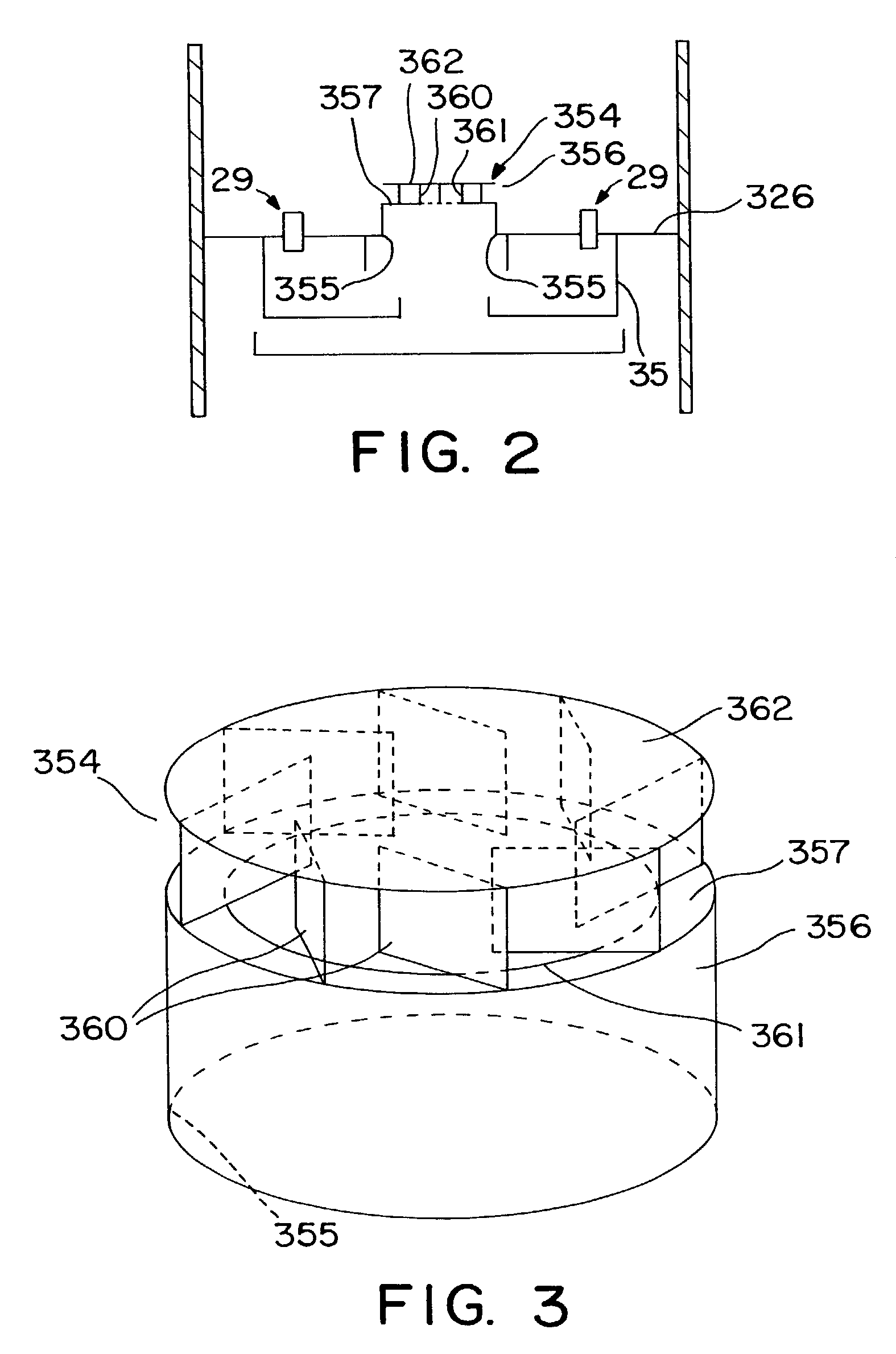Multiphase mixing device with staged gas introduction
- Summary
- Abstract
- Description
- Claims
- Application Information
AI Technical Summary
Benefits of technology
Problems solved by technology
Method used
Image
Examples
first embodiment
[0026]FIG. 1 shows, in simplified form, a hydroprocessing reactor column in accordance with the present invention. FIG. 1, FIG. 2, and FIG. 3 taken together, illustrate the present invention thereof. The general configuration of the reactor is conventional, as are details such as the supports for the grids and distributor plates, which are not shown for purposes of clarity. The reactor column 15 is formed as a generally cylindrical chamber having an outer wall 16. A reactor inlet 17 and a reactor outlet 18 are provided for introducing and discharging fluids from the reactor column 15. The reactor column 15 further comprises one or more catalyst beds 20 positioned along the longitudinal axis of the reactor column 15. Each of the catalyst beds 20 contains catalyst material 21, which is preferably supported below by a catalyst support grid 22. The catalyst support grid 22, together with the outer wall 16, provides direct support for the catalyst material 21. Alternatively, the catalys...
third embodiment
[0039]Turning now to FIG. 5, the present invention is next discussed. In this embodiment, the mixing system comprises an upwardly projecting sub-region or raised cap 354. As shown, the upwardly projecting sub-region 354 is formed over an opening 255 in the collection tray 126 as an upwardly extending wall 356 positioned above the perimeter of opening 255 such that wall 356 is coextensive with baffle 242 if baffle is present as shown in FIG. 5. If baffle 242 is not present, any opening size within the circumference formed by the passageways 29 may be used. The height of the upwardly extending wall 356 may be varied to suit the particular application for which the mixing system is to be used.
[0040]The mixing system in the third embodiment of the present invention comprises at least one and preferably a plurality of spillways 464 which direct a portion or slipstream of the vapor phase components of the product fluid, unreacted reactant fluid, quench fluids, and / or supplemental reactant...
fourth embodiment
[0041]In yet another embodiment of the mixing system of the present invention, which is illustrated by FIGS. 6 and 7, conduits are included such that they pass through the vertical wall of a raised cylindrical volume in the collection tray. In this fourth embodiment of the present invention, these conduits terminate in a tangential orientation to create beneficial rotational flow within the raised volume. In this embodiment, it is preferable that the cylindrical cap, which comprises upwardly projecting sub-region 554, extends even higher above collection tray 526 than the upwardly projecting sub-regions discussed in previously described embodiments.
[0042]The mixing system according to the fourth embodiment of the present invention comprises a plurality of inlets 566, which direct a portion or slipstream of the vapor phase components of the product fluid, unreacted reactant fluid, quench fluids, and / or supplemental reactants from the upper region of the interbed mixing zone to the lo...
PUM
| Property | Measurement | Unit |
|---|---|---|
| Flow rate | aaaaa | aaaaa |
Abstract
Description
Claims
Application Information
 Login to View More
Login to View More - R&D
- Intellectual Property
- Life Sciences
- Materials
- Tech Scout
- Unparalleled Data Quality
- Higher Quality Content
- 60% Fewer Hallucinations
Browse by: Latest US Patents, China's latest patents, Technical Efficacy Thesaurus, Application Domain, Technology Topic, Popular Technical Reports.
© 2025 PatSnap. All rights reserved.Legal|Privacy policy|Modern Slavery Act Transparency Statement|Sitemap|About US| Contact US: help@patsnap.com



